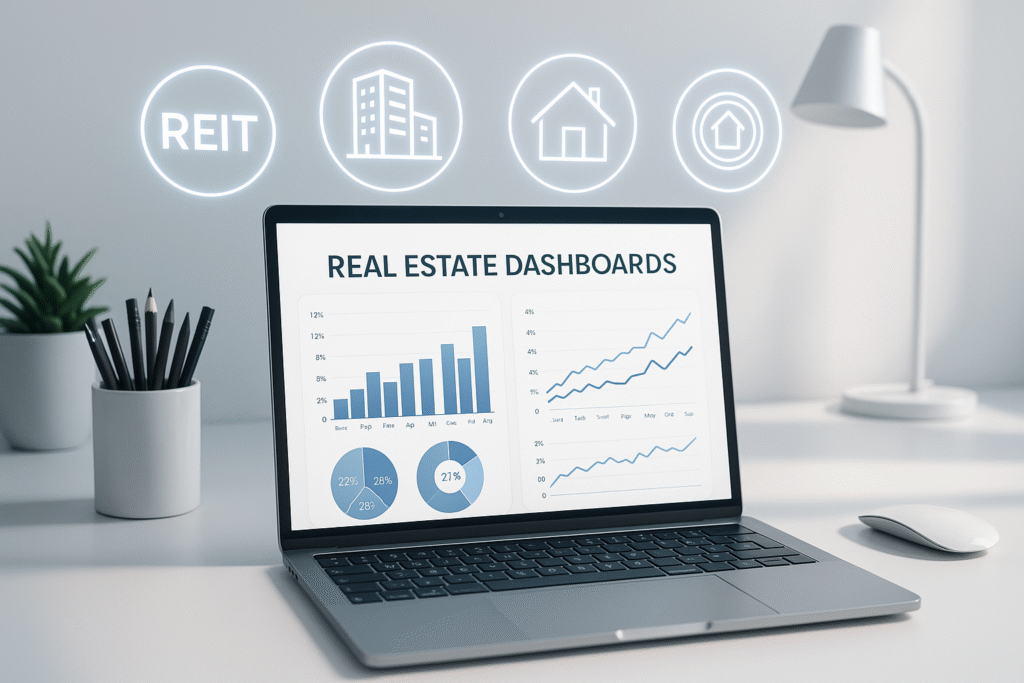Real estate has always been one of the safest and most profitable wealth-building assets. But in 2025, earning passive income from property has completely transformed.
You no longer need crores to buy a flat or manage tenants — thanks to modern investment options like REITs, fractional ownership, and automated rental models.
If you want to build long-term wealth without managing buildings, dealing with brokers, or paying heavy EMIs, this guide will show you exactly how real estate passive income works in 2025.
⭐ Why Real Estate Is Still the No.1 Passive Income Asset in 2025
Real estate gives you:
- Monthly cash flow (rent)
- Property value appreciation
- Tax benefits
- High long-term returns
- Stability compared to stocks/crypto
And now—with modern digital real-estate tools—you can start with ₹10,000 or even less.
Let’s break down all the passive real estate income options in 2025.
⭐ 1. REITs (Real Estate Investment Trusts)
The easiest way to earn passive income from real estate in 2025
REITs are like mutual funds — but for real estate.
A REIT company owns:
- Office spaces
- Malls
- Warehouses
- Data centers
- Commercial buildings
You invest small amounts, and the REIT pays you dividends from rental income and profit.
✔ Benefits of REITs:
- Start with as low as ₹300–₹500
- No property maintenance
- Monthly/Quarterly dividend income
- 100% passive
- Highly regulated
- Can sell anytime
✔ Ideal for:
Beginners who want simple, stress-free real estate income.
⭐ 2. Fractional Real Estate Ownership
Buy a “fraction” of a commercial property and earn rent like an owner
This is one of the biggest real estate trends of 2025.
Instead of buying a whole office or shop worth crores, you can buy a fractional share (like 1% or 2%) of the property with other investors.
You earn:
- Monthly rental income
- Profit when the property value increases
- Exit anytime through secondary market
✔ Benefits:
- Start with ₹10,000 – ₹25,000
- Invest in premium properties
- 8–12% average returns
- Fully managed by asset companies
✔ Great for:
People who want higher returns than REITs but with very low investment.
⭐ 3. Rental Properties (Automated in 2025)
Rental income is traditional real estate income, but technology has changed everything.
In 2025, rental income is easier because:
- Property management apps
- Digital tenant screening
- Smart rent collection
- Short-term rental automation (Airbnb style)
- AI-based pricing systems
You can invest in:
- Apartments
- Villas
- Student hostels
- PGs
- Co-living spaces
- Airbnb vacation homes
✔ Returns:
- 8–15% rental income
- 5–10% yearly appreciation
✔ Downside:
Requires higher capital and EMI commitment.
⭐ 4. Co-Living & Co-Working Spaces
2025 has seen massive growth in:
- Co-living hostels
- Remote-worker houses
- Co-working offices
- Shared commercial rooms
These generate higher rent because multiple people share one unit.
✔ Benefits:
- High occupancy
- Higher monthly income
- Perfect for metros
⭐ 5. Land Flipping (Semi-Passive)
Buy land at low price → hold for 2–5 years → sell at higher price.
2025 prices are rising due to:
- New expressways
- Digital infrastructure zones
- Smart cities
✔ Returns:
20–50% annually (varies by location)
✔ Note:
Not fully passive — needs research.
⭐ 6. Tokenized Real Estate (Coming in 2025–2026)
Some platforms allow buying real estate using blockchain tokens.
You get:
- Fractional ownership
- Rent distribution
- Transparent ledger
- Global investment options
This is still emerging but extremely promising.
⭐ Realistic Earnings From Real Estate Passive Income (2025)
| Method | Monthly Income | Investment Needed |
|---|---|---|
| REITs | ₹500 – ₹10,000 | ₹500 – ₹1 lakh |
| Fractional Ownership | ₹2,000 – ₹20,000 | ₹10k – ₹50k |
| Rental Property | ₹10,000 – ₹1 lakh | ₹10–50 lakh |
| Airbnb Automation | ₹20,000 – ₹1.5 lakh | ₹5–30 lakh |
| Co-Living | ₹30,000 – ₹2 lakh | ₹10–50 lakh |
⭐ REITs vs Fractional Ownership vs Rentals (2025 Comparison)
| Feature | REITs | Fractional | Rentals |
|---|---|---|---|
| Investment | Lowest | Low | High |
| Risk | Low | Medium | Medium/High |
| Effort | 0% | 5% | 30% |
| Returns | 6–9% | 10–14% | 12–20% |
| Ideal for | Beginners | Young investors | Property buyers |
⭐ Which Passive Income Method Should You Choose?
😊 If you’re a beginner:
Start with REITs.
💼 If you want better returns with low money:
Go for fractional real estate.
🏡 If you want stable long-term rental income:
Buy a rental property or Airbnb home.
⭐ Mistakes to Avoid in 2025
❌ Buying property without research
❌ Investing all money into one asset
❌ Choosing bad locations
❌ Ignoring maintenance costs
❌ Expecting fast returns
⭐ How to Start Real Estate Investing in 2025 (Step-by-Step)
Step 1: Decide your budget
Step 2: Choose between REITs, fractional, or rentals
Step 3: Research platforms
Step 4: Start small with REITs
Step 5: Diversify into fractional ownership
Step 6: Move into rental property when ready
⭐ Conclusion
Real estate in 2025 is smarter, more accessible, and more profitable than ever. Whether you have ₹500 or ₹50 lakhs, you can earn passive income from modern real estate options like REITs, fractional ownership, or automated rentals.
With the right strategy, this can become your most stable and long-term wealth-building asset.
Start small. Stay consistent. Grow big.
⭐ Meta Description (SEO)
“Learn the best ways to earn real estate passive income in 2025 through REITs, fractional ownership, and rental properties. Complete guide with returns, benefits, and beginner tips.”
⭐ FAQs
1. Can I invest in real estate with ₹500 in 2025?
Yes, through REITs.
2. Which is better—REITs or fractional ownership?
REITs for safety; fractional for higher returns.
3. Is rental income passive?
Yes—especially with automation tools.
4. What is the minimum investment for fractional real estate?
Usually ₹10,000–25,000.
5. Is real estate safe in 2025?
Yes. It remains one of the most stable investment categories.


